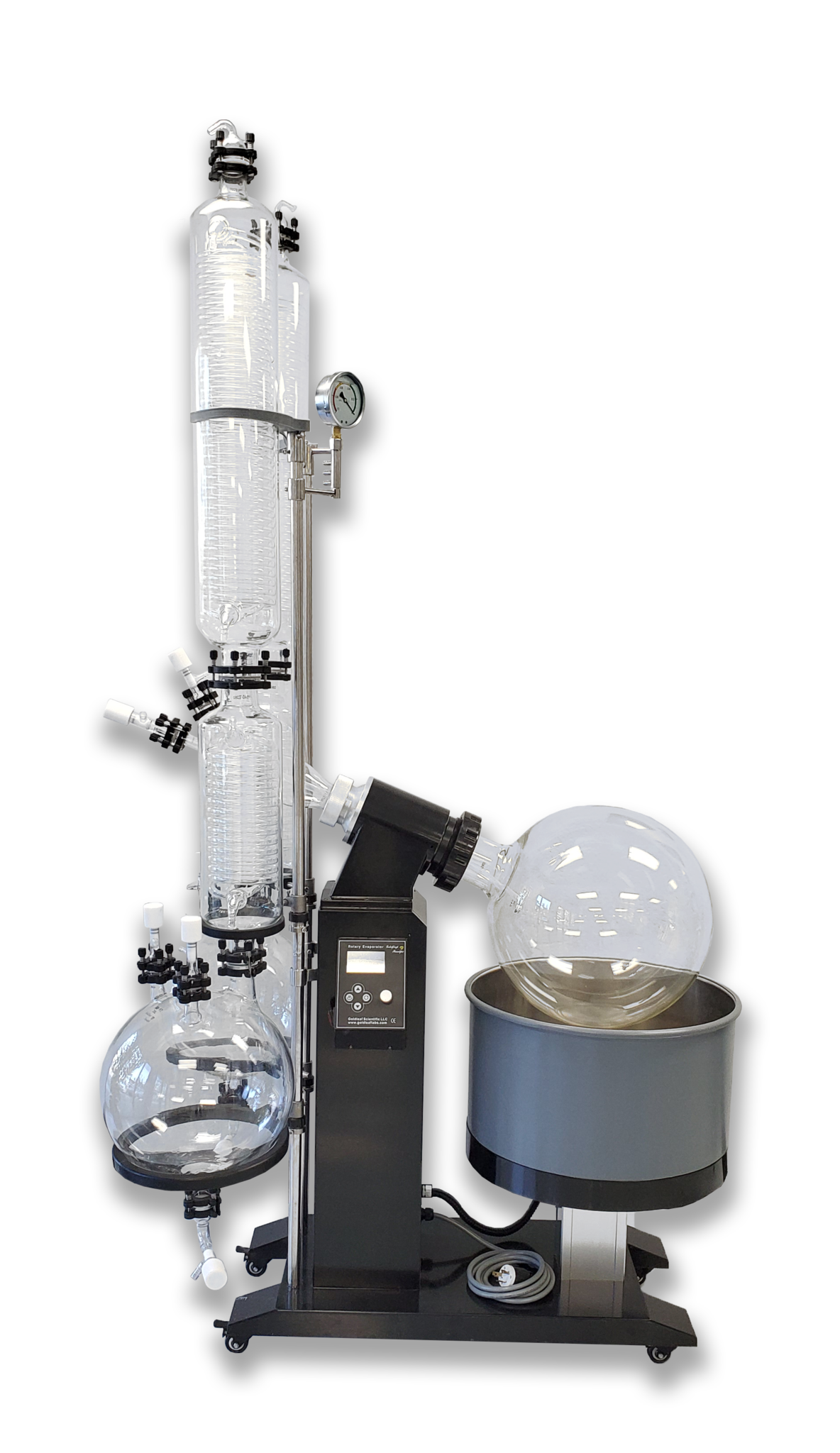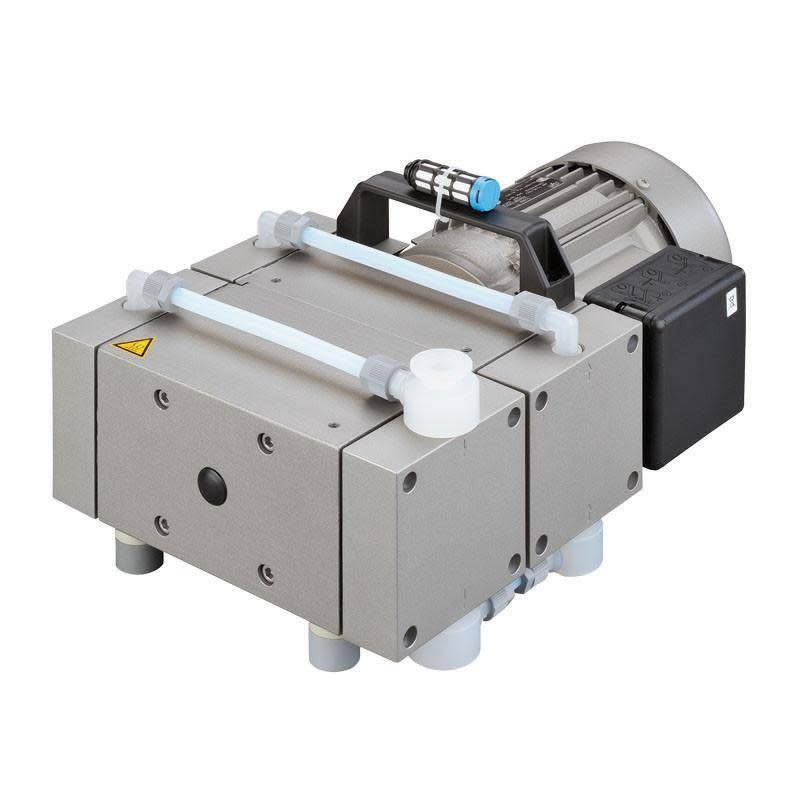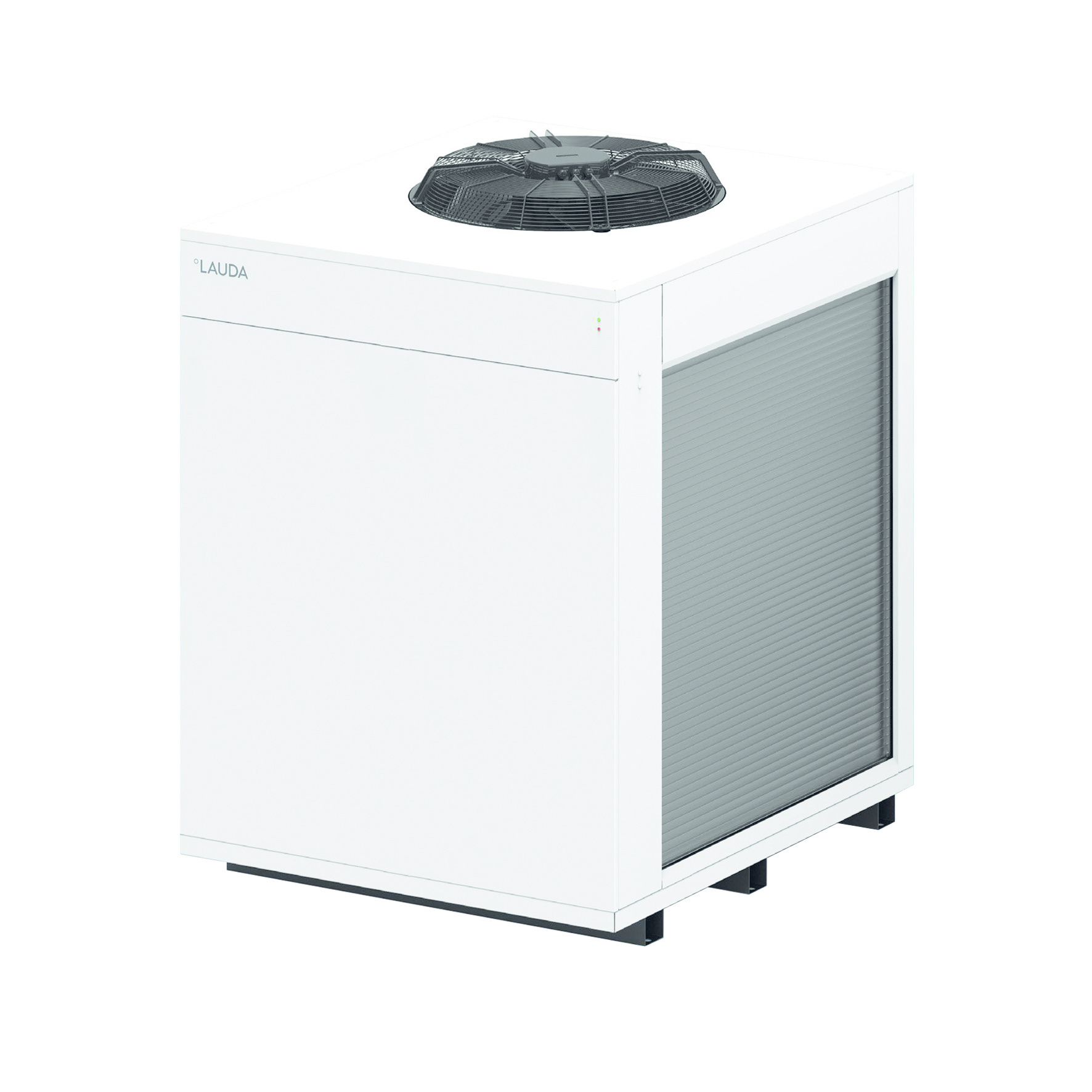You have no items in your shopping cart
How Rotary Evaporators Work
- Posted on
- Posted in How To Guides, Rotovaps
- 0

Introduction
In the realm of scientific research and product testing, rotary evaporators have emerged as invaluable tools for the efficient and precise distillation of solvents from sample solutions. This cutting-edge equipment employs a combination of heated batch, chilled condensers, and vacuum technology to achieve impressive results. In this blog, we will delve into the principles, functions, and applications of how rotary evaporators work, exploring why they are widely utilized in research and development processes.
Understanding A Rotary Evaporator and its Purpose
A rotary evaporator works by heating a solution in a rotating evaporating flask or round bottom flask that is filled with a solution that is a mixture of two compounds. Usually, solvents are being evaporated to be removed from this mixture, these solvents have low boiling points that are easily heated and separated from the rest of the mixture that has much higher boiling points.
As the solution is heated, the solvent recovery begins by sending vapors through a vapor duct that leads to a glass condenser which has been chilled enough to recondense the gas solvents back into a liquid.
Rate of evaporation is decided by the constant speed of the evaporation flask, bath temperature, condenser temperature, and vacuum inside depth.
Also known as rotovaps or rotary vacuum evaporators, they are sophisticated laboratory instruments designed to facilitate solvent removal from liquid samples. These devices play a pivotal role in various scientific fields, providing researchers and professionals with a dependable and efficient method of concentrating and purifying substances.
The Working Mechanism of A Rotary Evaporator
At the heart of a rotary evaporator is a round-bottomed flask, also known as the boiling flask, which contains the sample. The flask is placed in a heated bath. This bath can be filled distilled water or ideally oil. Using heating oil allows for higher temperatures in the bath that would normally cause water to evaporate. Also, the oil is more viscous and thick causing less splashing as the boiling flask rotates. Because of higher temps and faster rotation speeds, using oil in the bath creates a faster distillation.
The entire system operates under vacuum conditions to further lower the solvent's boiling point, ensuring a gentle and controlled distillation process. This vacuum allows solvent evaporation to occur at a reduced temperature and a low boiling point, protecting sensitive samples from degradation. It is important to select a high end vacuum pump, that can handle potential solvent vapors. Ideally a dry scroll pump would be used. Also, the pump should be strong enough to overcome the pressure inside the unit caused by the boiling solvent.
As the solvent evaporates from the boiling flask, the vapors travel through the system into the chilled condenser. This condenser is either filled with dry ice or connected to a high performance chiller, lower the temperatures lead to more efficient solvent recovery. High powered chillers are needed to achieve solvent removal and condensation. The colder the chiller the better, but it must also have high Kw/h power at the operating temperature to ensure the chiller is strong enough to overcome the heat load caused by the solvent evaporation.
As the vapors travel across the surface area of the condensing coils, the vapor is returned to a liquid state. The now liquid solvent drips down the coils and gathers in the collecting flask. A collecting flask will hold the chilled solvent until it is red to be drained at the end of the distillation.
Applications in Research and Development
Rotary evaporators find extensive application in research and development, where precise and rapid solvent removal is crucial for the isolation and analysis of target compounds. These versatile instruments are commonly employed in pharmaceutical, chemical, and biotechnology industries.
In pharmaceutical research, rotary evaporators are used to separate solvents from reaction mixtures, isolate active pharmaceutical ingredients (APIs), and purify drug candidates for further testing. They aid in achieving higher purity and yield, optimizing drug development processes.
In the chemical industry, rotary evaporators are indispensable for synthesizing, purifying, and analyzing compounds. Researchers can efficiently concentrate reaction mixtures, recover valuable products, and minimize waste.
In the biotechnology field, rotary evaporators are utilized to concentrate biological samples such as proteins, enzymes, and DNA, crucial for various analytical techniques like gel electrophoresis and spectroscopy.
Safety Considerations when Operating a Rotary Evaporator
As with any laboratory equipment, safety should be paramount when operating rotary evaporators. Standard lab practices, including the use of personal protective equipment (PPE) such as gloves, goggles, and lab coats, must be observed at all times.
Since rotary evaporators involve heating and cooling processes, caution should be exercised when handling hot oils and glass to prevent accidents and burns. Be aware of solvent vapors whenever dis-assembling a rotary evaporator as there may be fumes still trapped inside.
Key Features of a Rotary Evaporator
To understand the functionalities of rotary evaporators better, let's explore their key components and features. A rotary evaporator consists of:
Boiling Flask: The round-bottomed flask, where the sample solution is placed, comes in various sizes to accommodate different sample volumes. Also known as rotating flask or evaporation flask.
Heating Bath: The heat bath, filled with a heat-transfer fluid like water or oil, the water bath provides consistent and precise temperature control during the evaporation process.
Condenser: The chilled condenser is set to low temperatures, is oriented either vertical or diagonal, and cools the solvent vapor, causing it to condense back into a liquid state, which can be collected separately from the evaporated solvent.
Vacuum System: The vacuum pump maintains a low-pressure environment inside the rotary evaporator, reducing the boiling point of the solvent and facilitating faster evaporation.
Maintenance for Optimal Performance
To ensure the longevity and optimal performance of rotary evaporators, regular maintenance is essential. Here are some critical maintenance tips:
Cleaning: The boiling flask should be cleaned after each use to prevent cross-contamination between different samples. Regularly clean sample flask with the bath and vacuum system to remove any residue or debris.
Vacuum Test: Performing routine vacuum tests ensures that the system is properly sealed and functioning optimally, preventing any loss of vacuum during operation.
Recent Advancements in Rotary Evaporators
The rotary evaporator has seen significant advancements to enhance their usability and efficiency.
Dual Condensers: Some modern rotary evaporators are equipped with dual condensers, allowing researchers to condense larger volumes of solvent and reduce processing time.
Power Lifting Motor: Advanced models come with a power lifting motor for the boiling flask, making it easier to handle and minimizing the risk of spills or breakage.
Digital Display: The integration of digital displays provides precise temperature and vacuum control, allowing for more accurate and repeatable experiments.
Conclusion
In conclusion, a rotary evaporator is an invaluable tool for various research and development processes, providing scientists and professionals with a reliable method to distill solvents from sample solutions efficiently. Their use in pharmaceuticals, chemicals, and biotechnology industries underscores their importance in modern scientific endeavors. With proper safety measures, regular maintenance, and the adoption of recent advancements, rotary evaporators will continue to play a pivotal role in scientific advancements and discoveries.






Comments
Be the first to comment...